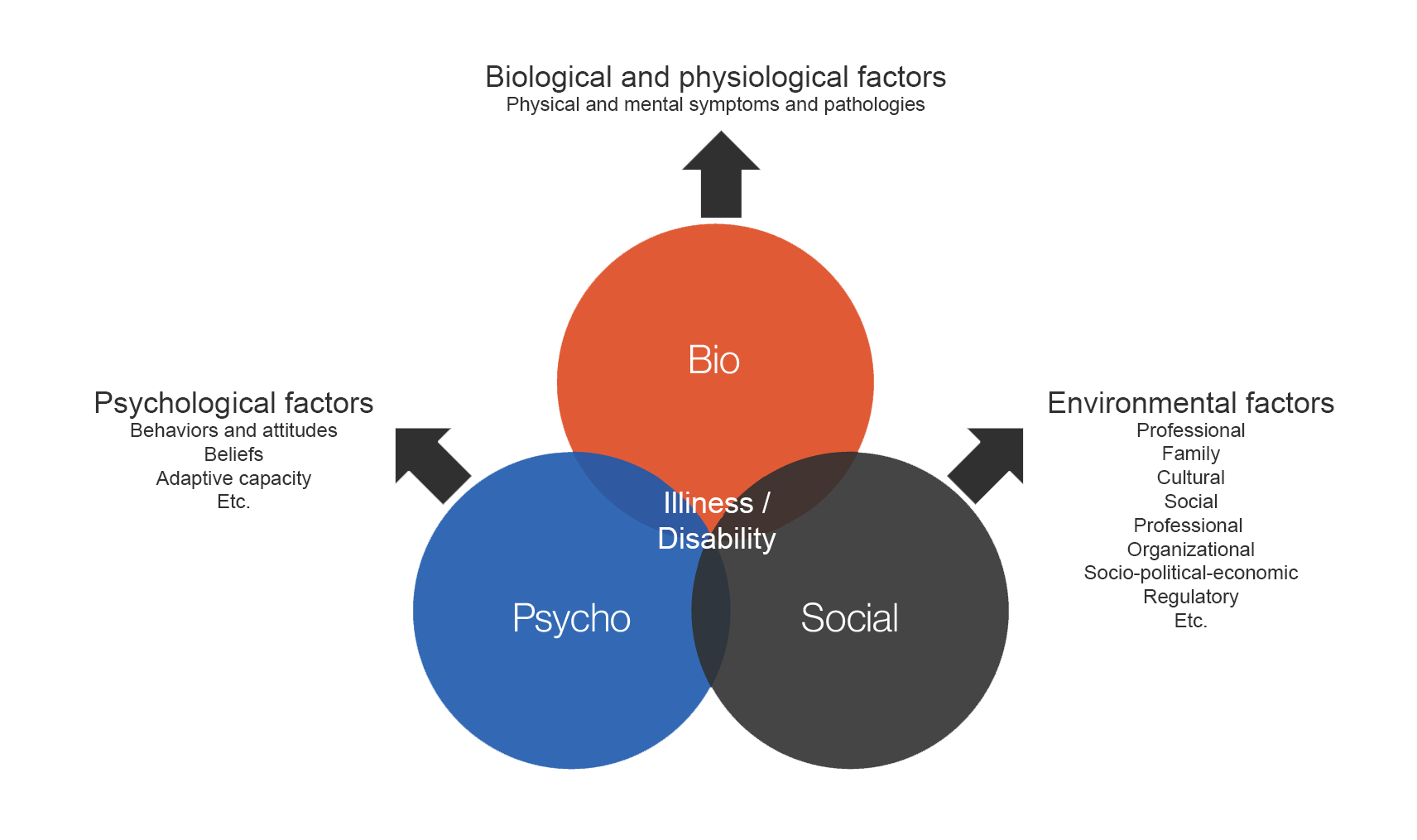Appendix 4.A – Biopsychosocial Model

Figure 10- Adaptation of the biopsychosocial model of illness (Engel, 1977)
It takes into account the psychological, social and biological factors of pathologies and is opposed to an exclusive reading via a biomedical, psychological, anti-psychiatric or model. This model does not exclude a priori these three approaches although they have different relevance according to the symptoms. It seems relevant for cases of mental disorders, chronic pain, sexuality and loss of functional independence. It often requires a multidisciplinary approach and a lot of time. The bio-psycho-social model is not incompatible with evidence-based analysis (evidence-base medicine) of the different aspects.
Although it considers anatomical causes that can be corrected, this model invites a greater focus on more complex determinants and systems, in which stakeholders and their interactions, as well as the role of context and the individual, are emphasized (Loisel et al., 2005). The biopsychosocial model integrates economic, social, physical and environmental factors into the process of establishing disability and the intervention process. It also emphasizes the relationship between the physical and social environments of work disability and the importance of external factors that influence the development of work disability (Durand, Loisel, Hong & Charpentier, 2002; Loisel et al., 2001).
References :
Durand, M.-J., Loisel, P., Hong, Q. N., & Charpentier, N. (2002). Helping clinicians in work disability prevention: The work disability diagnosis interview. Journal of Occupational Rehabilitation , 12 (3), 191-204.
Loisel, P., Durand, M. J., Berthelette, D., Vézina, N., Baril, R., Gagnon, D., . Tremblay, C. (2001). Disability prevention: New paradigm for the management of occupational back pain. Disease Management and Health Outcomes, 9 (7), 351-360.
Loisel, P. Buchbinder, R. Hazard, R., Keller, R., Scheel, I., van Tulder, M. & Webster, B. (2005). Prevention of work disability due to musculoskeletal disorders: The challenge of implementing evidence. Journal of Occupational Rehabilitation, 15 (4), 507-524. doi: 10.1007/s10926-005-8031-2